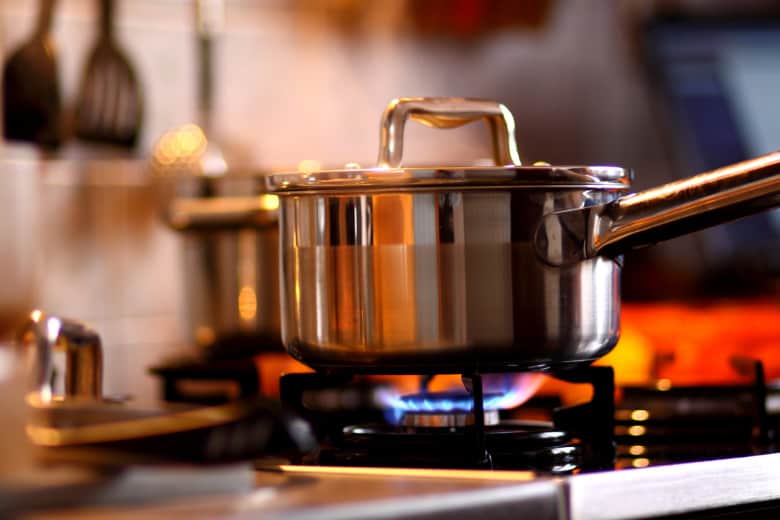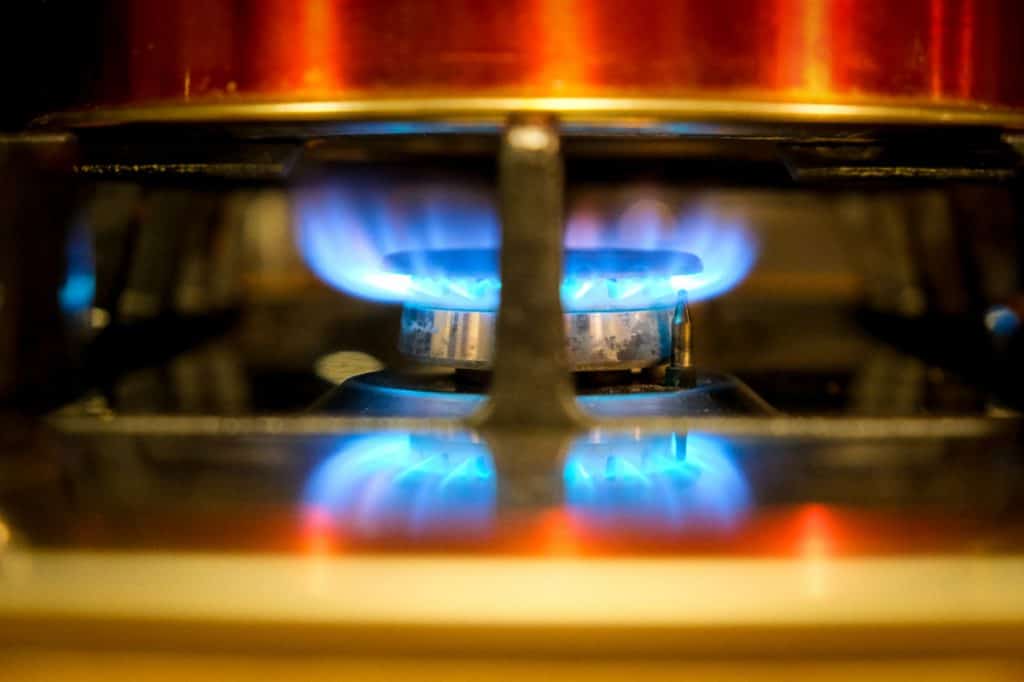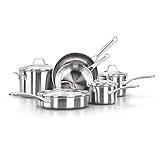Is it time to renew your pan collection? Confused about which cookware material is the best? Allow me to help you choose the best material for your set.
You want pans that are safe to use and make cooking easier (no burnt-on mess, please). So it’s essential that you choose the right material for the job. Ceramic vs stainless steel. How do they stack up?
I’ve been home-cooking vegan recipes for several years now. So my cookware has become essential for mealtimes since I use the stove a lot more than the oven. While I was gifted a new pan set by a loved one, I very quickly discovered that the coating wasn’t just coming off, but it was in my food. I would spend an hour in the kitchen to then eat bits of non-stick coating with my meal. It wasn’t fun.
So I researched the best materials to consider for my next cookware set. And the most popular options that came up were ceramic and stainless steel. To help you avoid the same predicament I had, below you’ll find everything you need to help you decipher between these two materials.

At a Glance
It’s not an exaggeration when I say that my quality of life changed when I upgraded to a stainless steel cookware set. My Prestige Set, which contains five items, keeps kitchen mess to a minimum and has actually brought back life to mealtimes. It’s the perfect set for a couple or a single household.
A wonderfully unique feature that I love is the straining lid! I’ve never seen this before on a pan, and I’m surprised it’s such a unique characteristic. Say goodbye to pouring out your pasta in a separate colander and save yourself more washing up.
You see, this upgrade isn’t just because I have new pans, it’s because I ditched a toxic coating and opted for stainless steel. They’re completely safe, budget-friendly, and long-lasting. And I can’t wait to share more of the benefits with you.
Ceramic vs Stainless Steel Cookware Sets Comparison
Let’s take an in-depth look into the ceramic vs stainless steel comparison. To approach this in a non-biased way, I explored, what I considered to be, the most influential factors when deciding on a new set for your kitchen. Explore all below.
Cooking Safety
Your cookware set should never put you in danger or pose a threat to your health. So which is the safest cooking material for pans—ceramic or stainless steel? Undoubtedly, the safest option is stainless steel. With no coating, you’re not at risk of toxins released into your food and environment.
Ceramic cookware, on the other hand, can often contain a Sol-Gel coating. The dilemma with this coating is that it’s a foreign substance added to the pan’s surface. It provides a non-stick surface for cooking. It’s verified as safe for food contact. But this material is also found in some fabric softeners and hair conditioners. I don’t know about you, but I’d prefer my cookware set to not contain any substances. In fact, I’d prefer no coating at all and to use natural substances, like olive oil, for a non-stick surface.
In particular, let’s take a look at the GreenLife Soft Grip Cookware Set. The Amazon page states that the non-stick coating creates 60% fewer carbon emissions than traditional coatings. That sounds positive and promising, but why not consider a carbon-neutral coating? Opt for zero coating in stainless steel sets like the Calphalon 10-Piece Pots and Pans Set.
Bottom line: Stainless steel will always be safer than any nonstick-coated cookware.
Durability
Cookware sets aren’t cheap, especially if opt for the best of the best. When looking at ceramic vs stainless steel sets, which is the most long-lasting? Despite what manufacturers often claim, the nonstick coating won’t last forever.
Each time you heat your pan, this silicone oil releases from the pan’s surface. This makes it a little stickier each time. And what happens when a pan is no longer non-stick? We get rid of it and have to fork out for a new set.
On the other hand, stainless steel cookware sets, such as this Cuisinart MCP-12N MultiClad Pro Set, can last decades, if not forever. But you’ll need to properly care for stainless steel pans. This includes using oil or butter when cooking ingredients to prevent them from sticking to the surface.
Furthermore, avoid regularly using acidic foods, such as tomatoes and soy sauce, with stainless steel pans. Stainless steel can leach heavy metals into food, which not only isn’t a nice thought but won’t add any nutritional value to your diet.
With that being said, stainless steel pans can be more long-lasting. But they can require some additional care such as not soaking a stainless steel pan in cold water immediately after use. (The temperature shock can damage your pans).
While caring for stainless steel pans might require more effort, this ensures that they’re much more long-lasting.
Heat Distribution
If you plan to cook on high heat, stay clear of ceramic cookware. This material works fine at low to medium heat, but at high heat levels, the nonstick properties can begin to break down. If searing is a big part of your cooking repertoire, stainless steel is your friend.

The secret to good heat distribution and retention isn’t in the coating of the cookware but in the materials making up the body of the pan, especially the base. The best conductor of heat is aluminum and copper however both metals tend to leech into the food so most designs will sandwich them between other materials. Ceramic cookware is actually only ceramic-coated (silicon). The pan itself is usually aluminum. Similarly, stainless steel designs frequently have a layer of copper or aluminum between 2 layers of stainless steel.
Maintenance
Earlier, I touched on the level of cleaning involved in stainless steel pans. But which material—ceramic or stainless steel—requires more maintenance? That depends on your definition.
In the beginning, life is great with nonstick pans. The ceramic coating wipes clean with a simple swipe of a sponge and some soapy water. But, after prolonged use, this surface wears off (and can possibly end up in your food). Despite many manufacturers’ claims, ceramic cookware needs to be handled with care. No metal utensils. No dishwasher. And, be prepared to replace them after a few years or so.
Alternatively, stainless steel cookware is pretty much bulletproof and can last a lifetime. They also can handle metal utensils and can be placed in the dishwasher. The downside? Without a nonstick coating, you’ll need to use oil or butter (calories) when frying or be prepared to soak and scrub your pans afterward.
My personal cookware consists of a full set of stainless steel and an additional ceramic nonstick 10-inch frying pan. I never found a need for nonstick stock pots or saucepans with the way I cook. Most of my recipes have plenty of liquids and minimize any food sticking to the pot. The ceramic pan is handy for delicate food such as fish or eggs. The best of both worlds!
Related: Our Cookware Buying Guide. How To Find Your Perfect Set.
Conclusion
So, which cookware would I recommend? An argument could be made for either type depending on your specific situation. However, if push comes to shove I’ll go with a nice stainless steel set. This material provides excellent heat distribution to cook food quickly and evenly. It’s also, pretty much indestructible and completely non-toxic.
One of my favorite steel sets is the Cuisinart N91-11 Smartnest Set. Consisting of 11 pieces, you’re not going to run short on cookware for a variety of dishes. Best of all, the stacking design saves room in your kitchen and helps to keep your space looking tidy.
Another highlight of stainless steel is that it’s possible to keep your pans looking clean and like new. Since this material is thick and hard enough, you can easily scrub away stains and debris. (But make sure to avoid rough sponges to prevent scratches).
Each type of cookware has its advantages and disadvantages. If you value easy clean-up and lower upfront cost, go ceramic. Looking for higher performance and completely non-toxic, stainless is the answer.
Check out the Cuisinart set here.





